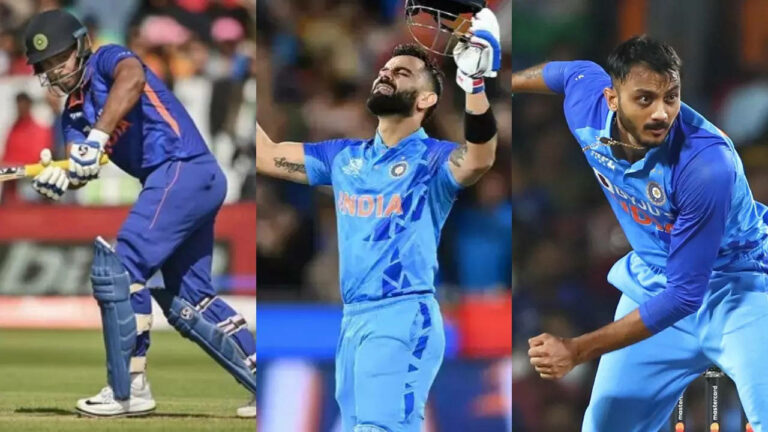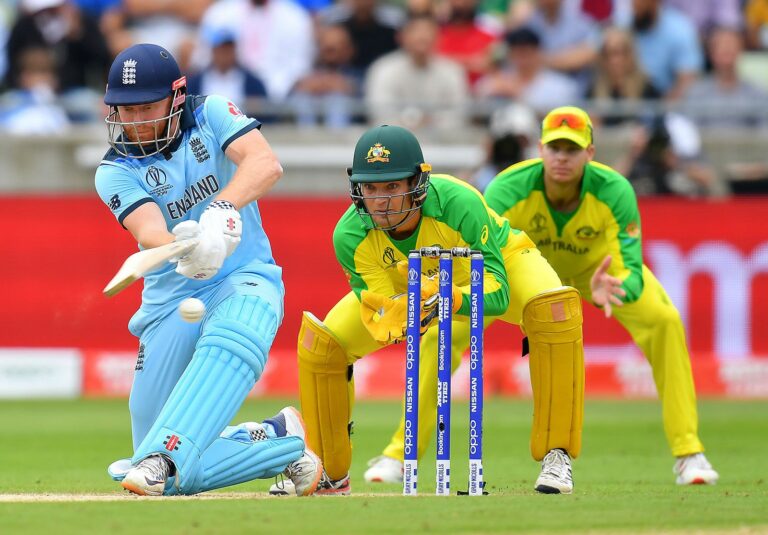Analyzing the Role of Cricket in Promoting Gender Inclusivity
Allpaanel, 11xPlay: Cricket, a sport with deep roots in tradition and history, has often been perceived as a male-dominated field. Historically, the sport was predominantly played and watched by men, with limited opportunities for women to actively participate or be involved in cricket at any level. The lack of gender inclusivity in cricket can be traced back to its origins, where societal norms and cultural attitudes played a significant role in shaping the sport’s gender dynamics.
However, over the years, there have been notable shifts towards greater gender inclusivity in cricket. With the rise of women’s cricket leagues, international competitions, and initiatives focused on promoting female participation in the sport, significant strides have been made to break down barriers and create more opportunities for women in cricket. Despite the challenges that still exist, the history of cricket is evolving to become more inclusive and diverse, reflecting a changing societal perspective on gender roles in sports.
Gender Disparities in Cricket Participation
Despite the growing popularity of cricket worldwide, gender disparities in participation remain a significant issue. Historically, cricket has been predominantly male-dominated, with limited opportunities and resources available for female players. This lack of access has resulted in a stark contrast between the number of male and female cricketers, highlighting the need for greater gender inclusivity in the sport.
One of the key factors contributing to gender disparities in cricket participation is the unequal distribution of resources and support for female players compared to their male counterparts. From fewer opportunities for professional contracts to limited access to high-quality training facilities, female cricketers often face more challenges in pursuing their cricketing careers. This inequality not only hinders the growth of women’s cricket but also perpetuates stereotypes and biases that further marginalize female athletes in the sport.
Challenges Faced by Female Cricket Players
Female cricket players face a myriad of challenges in their pursuit of sporting excellence. One of the prominent hurdles is the lack of equal opportunities and resources compared to their male counterparts. This disparity often results in limited access to quality training facilities, coaching staff, and financial support, hindering the development and growth of women’s cricket.
Another significant challenge is the prevalence of gender biases and stereotypes within the cricketing community. Female players often encounter discrimination, both overt and subtle, which can impact their confidence, morale, and overall performance on the field. These biases can manifest in various forms, such as unequal media coverage, lower pay scales, and societal expectations that prioritize men’s cricket over women’s, creating a challenging environment for female cricketers to thrive and succeed.
Initiatives to Promote Gender Inclusivity in Cricket
Initiatives to promote gender inclusivity in cricket have seen a rise in recent years with various organizations and cricket boards implementing programs to encourage more female participation in the sport. One such initiative is the establishment of women’s cricket leagues and tournaments to provide a platform for female cricketers to showcase their talent and skills on a professional level. These leagues not only offer competitive opportunities for women but also help in breaking down traditional gender stereotypes associated with cricket.
In addition to women’s leagues, another impactful initiative is the introduction of gender-neutral cricket coaching programs aimed at providing equal coaching and development opportunities for both male and female players. By offering specialized training sessions for girls and boys together, these programs foster a more inclusive and diverse cricketing environment, signaling a positive shift towards gender equality in the sport.
Impact of Gender Inclusivity in Cricket on Society
Gender inclusivity in cricket has the potential to have a profound impact on society. By breaking down traditional gender norms and promoting equality on the cricket field, this increased inclusivity can pave the way for societal change. As more women and girls are encouraged to participate in cricket, stereotypes surrounding sports and gender roles are challenged, leading to a more inclusive and progressive society overall.
Moreover, when gender inclusivity is promoted in cricket, it can serve as a platform for inspiring future generations to push boundaries and strive for gender equality in all aspects of life. The visibility of female cricket players in the media and on the field can empower young girls to pursue their passions, whether in sports or other male-dominated fields, and can contribute to a shift in societal attitudes towards gender equality. Ultimately, the impact of gender inclusivity in cricket goes beyond the boundaries of the sport, influencing perceptions and opportunities for women and girls in society.
Representation of Women in Cricket Leadership Roles
The representation of women in leadership roles within the realm of cricket has been a topic of increasing conversation and contemplation. While the sport has traditionally been dominated by male figures in positions of power and influence, there has been a gradual shift towards greater inclusivity and diversity in leadership positions. The presence of women in key decision-making roles not only brings a fresh perspective and approach to the sport but also sets a positive example for aspiring female cricketers and fans.
The appointment of women in leadership roles within cricket signifies a step towards achieving gender equality and recognition for the capabilities and potential of women in sports administration. By breaking the glass ceiling and assuming roles traditionally held by men, these women serve as trailblazers and inspire future generations of female leaders in cricket. Their contributions are essential in fostering a more inclusive and equitable sporting environment, paving the way for a brighter and more diverse future for the sport.
Gender Inclusivity in Cricket at the Grassroots Level
One crucial aspect of promoting gender inclusivity in cricket at the grassroots level is actively engaging and encouraging young girls to participate in the sport. By fostering a welcoming and supportive environment from an early age, young girls are more likely to develop a passion for cricket and feel empowered to pursue their interests in the sport.
In addition to providing equal opportunities for both boys and girls to participate in cricket programs, it is important to have dedicated coaching staff who are trained in gender-sensitive coaching methods. By ensuring that coaches are equipped to handle the unique needs and challenges faced by female players, grassroots cricket programs can effectively promote gender inclusivity and create a level playing field for all aspiring cricketers.
The Role of Media in Promoting Gender Inclusivity in Cricket
Media plays a crucial role in shaping public perceptions and attitudes towards women’s cricket. Through effective storytelling and coverage, the media has the power to highlight the achievements and talents of female cricketers, challenging stereotypes and biases. By providing equal visibility and recognition to women’s cricket, the media can help break down barriers and promote gender inclusivity in the sport.
Furthermore, media platforms have the ability to amplify the voices of female cricketers, coaches, and officials, providing them with a platform to share their experiences and insights. This representation not only inspires the next generation of girls to take up cricket but also fosters a sense of belonging and empowerment among current female players. When the media portrays women’s cricket in a positive and inclusive light, it sends a powerful message that diversity and equality are not only important but also celebrated in the sporting world.
Future Prospects for Gender Inclusivity in Cricket
Efforts to promote gender inclusivity in cricket continue to gain momentum, with various cricketing bodies and organizations implementing initiatives to bridge the gender gap in the sport. The future prospects for gender inclusivity in cricket look promising, as more attention is being directed towards providing equal opportunities for female players to showcase their talents and passion for the game.
Gender inclusivity in cricket is not just about creating opportunities for female players on the field but also about fostering a more diverse and inclusive cricketing community off the field. As more awareness is raised about the importance of gender equality in sports, the future of cricket holds the potential for greater female representation at all levels of the game, paving the way for a brighter and more inclusive future for cricket enthusiasts worldwide.
Celebrating Success Stories of Gender Inclusivity in Cricket
In recent years, there have been significant strides in promoting gender inclusivity in cricket, leading to the emergence of several success stories that deserve recognition. One such inspiring tale is that of Ellyse Perry, an Australian cricket sensation who has not only showcased immense talent on the field but has also broken barriers by challenging stereotypes and paving the way for future generations of female cricketers. Perry’s dedication, skill, and influence have contributed to the growing acceptance and respect for women’s cricket worldwide.
Another notable success story in the realm of gender inclusivity in cricket is the rise of the Indian women’s cricket team. Led by inspirational captains like Mithali Raj and Harmanpreet Kaur, these players have shattered glass ceilings and shattered preconceived notions about women’s capabilities in the sport. Their remarkable achievements, including reaching the finals of prestigious tournaments like the ICC Women’s World Cup, have not only garnered widespread acclaim but have also inspired a new wave of young girls to pursue their cricketing dreams without limitations.
What is the history of gender inclusivity in cricket?
Historically, cricket has been a male-dominated sport with limited opportunities for women to participate. However, in recent years, there have been efforts to promote gender inclusivity in the sport.
What are some challenges faced by female cricket players?
Female cricket players often face challenges such as lack of resources, limited opportunities for training and competition, and gender stereotypes that may discourage their participation in the sport.
What initiatives have been taken to promote gender inclusivity in cricket?
Various initiatives, such as women’s cricket leagues, training programs, and awareness campaigns, have been implemented to promote gender inclusivity in cricket and encourage more female participation in the sport.
How does gender inclusivity in cricket impact society?
Gender inclusivity in cricket helps challenge traditional gender norms, promotes gender equality, and provides positive role models for young girls to look up to. It also promotes diversity and inclusivity in the sport.
How are women represented in leadership roles in cricket?
Women are increasingly being represented in leadership roles in cricket, with more female coaches, administrators, and officials taking on important positions within the sport.
What is being done to promote gender inclusivity in cricket at the grassroots level?
Efforts are being made to promote gender inclusivity in cricket at the grassroots level through initiatives such as youth development programs, school partnerships, and community outreach programs.
What role does the media play in promoting gender inclusivity in cricket?
The media plays a crucial role in promoting gender inclusivity in cricket by covering women’s cricket matches, highlighting female players’ achievements, and challenging gender stereotypes in sports coverage.
What are the future prospects for gender inclusivity in cricket?
The future looks promising for gender inclusivity in cricket, with increasing support for women’s cricket, growing opportunities for female players, and a shift towards a more inclusive and diverse cricketing community.
Can you provide some success stories of gender inclusivity in cricket?
Some success stories of gender inclusivity in cricket include the rise of women’s cricket leagues, the success of female cricket players on the international stage, and the growing recognition and support for women’s cricket around the world.







